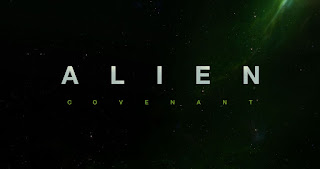Released: May 26th 2017 (United States)
Length: 129 Minutes
Certificate: 12A
Director: Joachim Rønning and Espen Sandberg
Starring: Johnny Depp, Brendon Thwaites, Kaya Scodelario, Geoffrey Rush, Javier Bardem and Kevin McNally
Based on the gamble of making a film based on a theme park
ride, the Pirates of the Caribbean franchise was lightning in a bottle back in
2003, but since the trilogy ended in 2007, the franchise has overstayed its
welcome. This trend continues after a long absence with Salazar’s Revenge,
another tired iteration which just can’t reinvigorate things.
Picking up after On Stranger Tides (And not following up on
the washed-up Jack Sparrow voodoo doll, if anyone even remembers that…) Salazar’s
Revenge is a hunt for Poseidon’s Trident, a blade that can lift any curse. The
British Empire wants it and the young Henry Turner (Brendon Thwaites) also
desires it to free his father Will (Orlando Bloom) from the Flying Dutchman. Soon
Captain Jack Sparrow (Johnny Depp) gets roped in along with aspiring astronomer
Carina Smyth (Kaya Scodelario), but they find themselves pursued by Captain
Salazar (Javier Bardem) who has a personal interest in ending the witty
Captain. The opening is a scrolling collection of random conveniences that
bring characters and plot points together without much rhyme or reason and things
feel incredibly rushed from here on in, racing through the better moments while
chucking in scenes that go nowhere. The most glaring of these is a short spate
at Hangman’s Bay with a band of island dwellers who show up for five minutes
then immediately get off-screen. Often the film will skip over a few moments,
particularly during chase scenes, delivering a more jarring pace. The humour
has lost its muster as well, with one-note jokes strung along with third-rate
dialogue that saps a lot of the charm. Things do pick up in the last act
though, with a set piece on a dazzling jewel-crusted island that eventually
gives way to a well thought out connection to the original trilogy, something
the fourth entry didn’t have. This can’t save much of the plot though as it
throws all sorts of contrivances and elements at the screen, resulting in a
feeling of disinterest that hangs over the proceedings. I found myself just
sitting back, not able to get into the film as I did with the first three.
The characters for the Pirate’s fifth outing aren’t much to
write home about either. Johnny Depp is back again as Jack Sparrow, but his
charisma seems to have wilted; for the most part he wobbles his way through, occasionally
tipping into an action scene but his performance has fallen far in the current
decade. Javier Bardem is a great actor but in this movie, he’s essentially
playing a second Davy Jones, right down to him and his crew being unable to set
foot on land. He’s introduced far too early as well, spoiling whatever menace
he could have had. At least the newcomers are far more interesting and well-rounded
than they were in the previous entry; right from the get-go, Brendan Thwaites and
the ties he brings to the original trilogy do enough to sell you on his mission
and the resourceful Carina Smyth is also likeable, even if the film sees fit to
run her branding as a witch into the ground early on. And the always capable Geoffrey
Rush is great as Barbossa despite not having as big a presence as he did
before. Rounding off the characters is a set of expendable British Commodores
drafted in for marquee value, a short and pointless cameo from Beatles singer
Paul McCartney and another actual witch who might as well be Tia Dalma from the
original trilogy. A lot of unneeded segways take place at the hands of these
side characters, cluttering the plot with more unnecessary filler. While some
of its cast delivers good performances, Salazar’s Revenge is very weak when it
comes to characterisation.
At least it all looks the part; the swashbuckling action the
series is known for is again on top form; well shot and well-choreographed
stunt work gel with the special effects brilliantly; some of the best moments
include an attack from crusted sharks absent from films past and a gloomy battle
with ships running side-by-side, cannons clanging and all. The ship used by
Salazar feels appropriately alien, bending upwards before bearing down on ships
with its tooth like fractures. On the other hand, the effects and design for
Salazar and his crew feel rather lazy; it’s as if they applied a dusty grey
filter to zombify them and then animated some body parts while leaving others
out completely. The music comprises the same themes and notes you’ve come to
expect from the series with a final flourish at its conclusion doing much to
sell the bridge between the fifth and third entries. Costume work and makeup
keep up their ability to sell the setting and while much of the film takes
place on land this time, the sets are also well realised. Good scenery and
action sequences have, unfortunately, been wrapped in a film whose plot and
characters can’t measure up.
Outside of its final act, I had a tough time getting into
Salazar’s Revenge (A horrible retitle in my book); a few decent characters and
action sequences can’t save it from being tiresome and forgettable. The phoned
in acting, repetitive ideas and scattered plot components all point to a
franchise long past its prime that insists on continuing regardless. It may not
be as bad as 2011’s Stranger Tides but the past six years have not been kind to
what was once an exciting adventure on the high seas.
Rating: 2.5/5 (Average)









